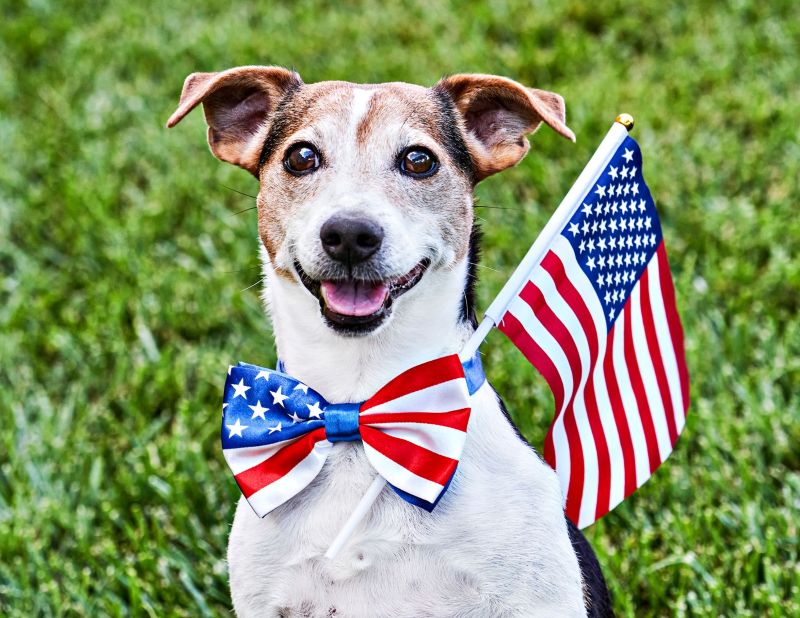Pet care business owners need to know their success or failure will depend on understanding how to measure success, what key performance metrics drive profits (or losses for those who aren’t paying attention), and how to deliver amazing customer experiences.
In this guide, we are going to help you uncover the revenue that you missed in 2023 and how to capture and optimize that revenue in 2024. But before we do a deep dive into the data, I think that it’s important to focus on the processes and experiences that can set the stage for your business to capitalize on the most profit for your pet care business.
Pet Care Business Processes
Having repeatable and documented processes is the key to everything when it comes to pet care. Most owners recognize the importance of these processes when it comes to caring for animals, but overlook processes related to their brand reputation, as well as sales and marketing for existing and new clients. Your goal as a business owner is to be very intentional at creating multiple customer journey paths to ensure both staff and customers have the best experience with your brand, depending on where they are within their personal customer journey. If you leverage dog boarding software and/or dog daycare software to create repeatable processes for sales and operations this will make staff training simpler and more effective.
Pet Care Business Customer Experience
The lifeblood of every business is the constant flow of new customers and ensuring the pet parent is brought into the pet experience is crucial. The pet and owner experience needs to be designed with a lot of intention. Have you secret-shopped your facility in the past 6 months? What does it sound and feel like to be a new potential client at your facility? How are regular clients treated, are you using all the knowledge you have about them & their pets to improve their experience?
Understanding the Pet Care Customer Experience
As you evaluate your current customer experience, you will want to break it down into the most granular customer interactions possible. When you break it down and evaluate each component you can identify what small tweaks you can make to optimize each customer interaction and understand the positive impact of each change that you make.
The customer experience should be broken down into phases of the customer journey.
Optimizing the Customer Experience for Conversions
Customer Research
75% of all future customers will start by looking at your website. You will want to make sure you are clearly explaining how you are different/better, what they should expect should they choose to take the next step, and how they can take the next step.
- Are you sharing a compelling company story about the WHY behind your passion and love for working with animals?
- Is your website clear on the services you offer & value for both the pets and their parents?
- Are you calling out the certifications or training you invest in for staff?
- Are you showing social proof by displaying reviews & referrals
- Do you incorporate video into your website to show potential new clients what a “day in the life of a dog” at your facility would look like?
- Have you integrated your dog boarding software and/or dog daycare software online booking solution so potential new clients can take action the moment they are ready without picking up the phone?
Phone Calls
Possibly one of the hardest positions to staff for in pet care businesses is the “reservation specialist” role. This is the primary person who will interact with all potential and existing customers, and they should be prepared to build rapport on every call. Some things to evaluate on all phone calls are below.
- How Many Rings Before Pickup? Your business line should not ring more than 3 times before it is answered during business hours.
- How is the Phone Answered? This should be consistent, and friendly and if you are optimizing your phone call experience you should have specific scripts that should be followed depending on if it is a new customer calling vs an existing customer calling.
- Customer Discovery & Info Capture? When you identify a new customer on the line, does your staff know how to tell a compelling company story? Are they able to collect the necessary information for follow-up (name, email, cell number, dog name, breed, etc), while also building rapport and asking for the appointment?
- Explaining the “WHY?” Does your staff know the appropriate way to answer the most common questions? Building call scripts that are focused on specific goals is key to your staff explaining why and how your business is different.
- What Services Do You Offer to Provide Personalized Pet Care Experiences? Does your staff know to prompt customers for enrichment bundles and can they explain the value of each service for both the pet and the parents? Your dog boarding software and/or dog daycare software should have a streamlined way for you to add these enrichment bundles to both dog daycare and dog boarding appointments.
Building Exterior
- Easy to Find? If you already have a facility, it might be too late for you to ensure your facility is located in an easy-to-find location, however, you can still use additional signage on other high-traffic areas that point people in the right direction.
- Parking or Concierge Drop-off? Make it clear if you offer a concierge pick-up and drop-off service (some pet care businesses will offer this as a convenience while others include this as a perk of a dog daycare membership program). Either way, be sure to let pet parents know if you offer this convenience.
Reception/Lobby Area
Your reception area is typically the first and last point of the facility that a pet owner can see, hear, and smell. Making sure that you have a consistent customer experience and a place where they feel great about dropping off their pet is key.
- Does Your Staff Look ‘Pet Care Professional’? The staff look is a representation of your brand and having a company dress code is the best way to protect your brand’s reputation. Branded company shirts with limited options for pants or shorts should be specified for all staff in the front and back of the house.
- Does the Facility Smell Clean? Having a daily cleaning protocol for both the back of the house and the front of the house will ensure that your facility does not smell like a pet care business. Animal Health Technologies has the right cleaning products and protocols for every material type; it’s your duty to ensure staff does the daily work to keep your reputation of delivering a safe and clean experience for all pets in your care.
- Do you have a “brag wall”? Having a wall in your lobby dedicated to pets & their parents can help build a strong community of customers. Wouldn’t you love to be able to recognize another pet parent in the grocery store who also goes to your same dog daycare facility? By having a brag wall with pictures of pets & their parents, you can build a stronger community.

- Does Your Staff Know Who is Checking In? It is key that your staff knows clients and pets by name and an added touch to the customer experience would be to have your staff come out from behind the desk and greet the dogs and prepare them for the “runner” to take them to the appropriate run or dog daycare playgroup. The dashboard on your dog boarding software and/or dog daycare software should make this a simple process to sort the order of pets based on check-in time.
- Is the Reception Area Quiet? Having a loud facility is NOT the norm in the pet care industry. The facilities that focus on a strong enrichment program to keep dogs mentally and physically engaged will have less barking and noise. The other factor to ensure your facility is not overly loud is to ensure that you are rejecting dogs that are not comfortable in group play (many times signaled by excessive barking).
- Do You Have Separate Check-in Areas by Service? If you are a high-traffic facility that has more than 50 dogs per day, then you may want to consider having multiple check-in stations. Providing a quick check-in and check-out experience with multiple stations you can ensure that you keep a smaller number of dogs in the lobby. If you have dog boarding software and/or dog daycare software, you can have multiple stations and separate the dog daycare check-ins (which should be super fast) and the dog boarding check-ins which will require a bit more in-depth check-in process.
Communication + Education + Recommendations
If you have done the work to optimize your customer journey for new potential clients who are researching, now you need to focus on the next step in the customer journey and ensure that you deliver an amazing customer experience that is in line with your brand. A few of the dog boarding software and/or dog daycare software solutions will have integrated marketing tools that will allow you to automate communication & educational aspects of the customer journey based on the appointments that have been scheduled.
When your reservation specialist has converted a phone call into a facility tour or dog daycare evaluation, you will want to focus on a clear communication strategy that educates and makes appropriate recommendations.
Facility Tour Experience
To deliver the best facility tour, you will need to design an experience that answers some of the basic questions, have a story to tell as you walk through each area of the facility, and end by asking for their business. You will want to share answers to several basic items when scheduling the tour. Be sure to have your reservation specialists record this information into the client profile within your dog boarding software and/or dog daycare software.
- Do they bring their pet or is it a human-only tour?
- How much time is needed?
- How should they evaluate your business and staff?
- What are the services that you offer?
Tailoring the tour to meet the specific needs and concerns of each visitor ensures a memorable and impactful experience.
- Understand What is Important to Each Pet Parent: Each pet care owner should be associated with a persona of “Good”, “Better” or “Best”. Once you have identified which persona applies to this new potential customer you can select the appropriate recommendations to make
- Recommend a Personalized Experience: Your job is to make sure that each pet owner knows you are going to make recommendations to send their pet home “the best version of themselves”. This should be supported by a well-rounded enrichment program that offers activities for puppies, senior pups, and social and non-social guests.
- Provide a Digital Feedback Form: After a pet parent finishes their tour, it’s a good best practice to send them a quick survey to evaluate your business via text. If you are listening to new customers’ candid feedback and making adjustments to ensure you deliver an amazing experience; tours will turn into a great funnel for a long-term relationship with customers that will utilize your dog daycare, dog boarding, and pet grooming services. Depending on which dog boarding software and/or dog daycare software you utilize, this can be built directly into the text experience when clients finish their tour.
Dog Daycare Evaluation Experience
The lifeblood of a successful pet care business that offers dog daycare is going to require that you invest in marketing to consistently deliver at least 5 new dog daycare evaluations per week (with some of the top performing facilities delivering 10-15 per week). The one thing to remember is that a dog daycare evaluation should be treated differently than a facility tour, because dog daycare is a service that you can create demand for and thus, requires additional steps to deliver the best customer experience. The goal of every dog daycare evaluation is to convert that new customer into a package purchase or at the very least get their next daycare day scheduled. Top-performing pet care businesses are converting 90% of daycare evaluations into a package purchase. This metric should be easy to track in your dog boarding software and/or dog daycare software.
Pet parents who schedule a dog daycare evaluation, typically have no idea what to expect. The appropriate way to educate them is, 48 hours before their scheduled daycare evaluation, to send them an email and/or text that explains what they should expect, how long the evaluation will last, what criteria make a dog a great fit for daycare and their options for a limited time offer of an “Intro to Daycare” package.
- I typically recommend making a 6-day package that has a 30-day expiration with requirements that they need to come in for daycare 2x per week for the next 3 weeks. The goal of the intro to daycare package is so that you can understand the dog’s play style, the treats that they like, the dogs they prefer to play with and to get both the pet and their parent into a routine of coming to your facility.
Bringing the pet parent into the pet experience is critical to the success of your daycare evaluation. The best way to do this is by sending out a report card before noon that includes a happy update, photos, and videos of them playing with other pups, and enjoying some enrichment activities. This is standard functionality when using kennel connection dog boarding software.
- By including a free enrichment activity, the pet owner can share in the joy of the pet’s day and it also increases your chances that pet parents will opt-in to add enrichment activities for future dog daycare and dog boarding appointments.
When the pet parent comes to pick up their pet from the evaluation, having an intentional process to review, recommend, and convert is key.
- I’d recommend you offer them a beverage when reviewing the results of your evaluation.
- If you aren’t already using it, having a formal evaluation worksheet is key to making sure you have solid talking points to review with the pet parent, but also key in making sure you are only taking dogs and humans that are a good fit for your facility.
- You should hand them a laminated paper that clearly displays the options for enrichment and personalized experiences for your facility.
Metrics That Matter
Now that you have the background on the customer experience, we are going to shift gears a bit and do a deep dive into the key performance metrics that every single dog daycare and dog boarding business should be focused on to drive overall revenue and profit. If you have chosen the right dog boarding software and/or dog daycare software, then these should be simple to pull directly through business and/or financial reports.
Dog Boarding Metrics
Acquisition Metrics for Dog Boarding Businesses
- # of phone calls (total)
- # of phone calls for boarding (existing customers)
- # of phone calls for boarding (new customers)
- # of new customer profiles created
- # of phone calls that converted into an appointment
- # of phone calls that converted into a facility tour
Performance & Revenue for Dog Boarding Services
- # of active boarding customers during the date range
- # of clients who have a first dog boarding appointment
- # of facility tours delivered (total)
- # of tours that turned into a boarding appointment
- # of boarding appointments (total)
- # of pet nights during the date range (total)
- % of boarding appointments with 1 enrichment service (20% should be your goal)
- % of boarding appointments with 1 enrichment bundle (70% should be your goal)
- % of boarding appointments with a departure grooming service
- Average revenue per pet night
- Total Boarding revenue
- Labor as a percentage of revenue (the goal is 25% labor as a percentage of revenue)
Dog Daycare Metrics
Acquisition Metrics for Dog Daycare Businesses
- # of phone calls (total)
- # of phone calls for daycare (existing customers)
- # of phone calls for daycare (new customers)
- # of new customer profiles created
- # of phone calls that converted into an appointment
- # of phone calls that converted into a daycare evaluation
Performance & Revenue for Dog Daycare Services
- # of active daycare customers during the date range
- # of clients who have a first dog daycare appointment
- # of daycare evaluations delivered (total)
- # of evaluations that turned into a dog daycare appointment
- # of evaluations that turned into a package purchase
- # of daycare appointments (total)
- # of pet days during the date range (total)
- % of daycare appointments with 1 enrichment service (20% should be your goal)
- % of daycare appointments with 1 enrichment bundle (70% should be your goal)
- % of daycare appointments with a departure grooming service
- # of daycare customers who attended 1x per week for 30 days
- # of daycare customers who attended 2x per week for 30 days
- # of daycare customers who attended 3x per week for 30 days
- Total revenue of daycare packages sold
- Total liability of daycare packages sold
- Average revenue per pet day
- Total daycare revenue
- Total daycare days paid for with a package
- Labor as a percentage of revenue (the goal is 25% labor as a percentage of revenue)
Marketing Spend + Return on Investment
As you evaluate how much and where to spend your funds, the best recommendation I can give is to start small. Take a monthly budget of around $500 and evaluate the spend weekly. The key to successful investing in digital marketing is to get an immediate return on the investment. For my digital campaigns, I look for a return of $2-$3 for every dollar that I spend on marketing. Below is a simple spreadsheet that you should use to measure the success of each campaign based on ad spend.
This approach ensures clear communication of metrics and strategies for pet care businesses, emphasizing the importance of leveraging dog boarding and daycare software to optimize operations, enhance customer experiences, and drive revenue growth.

If you want to learn more you can talk with an expert by clicking below:



